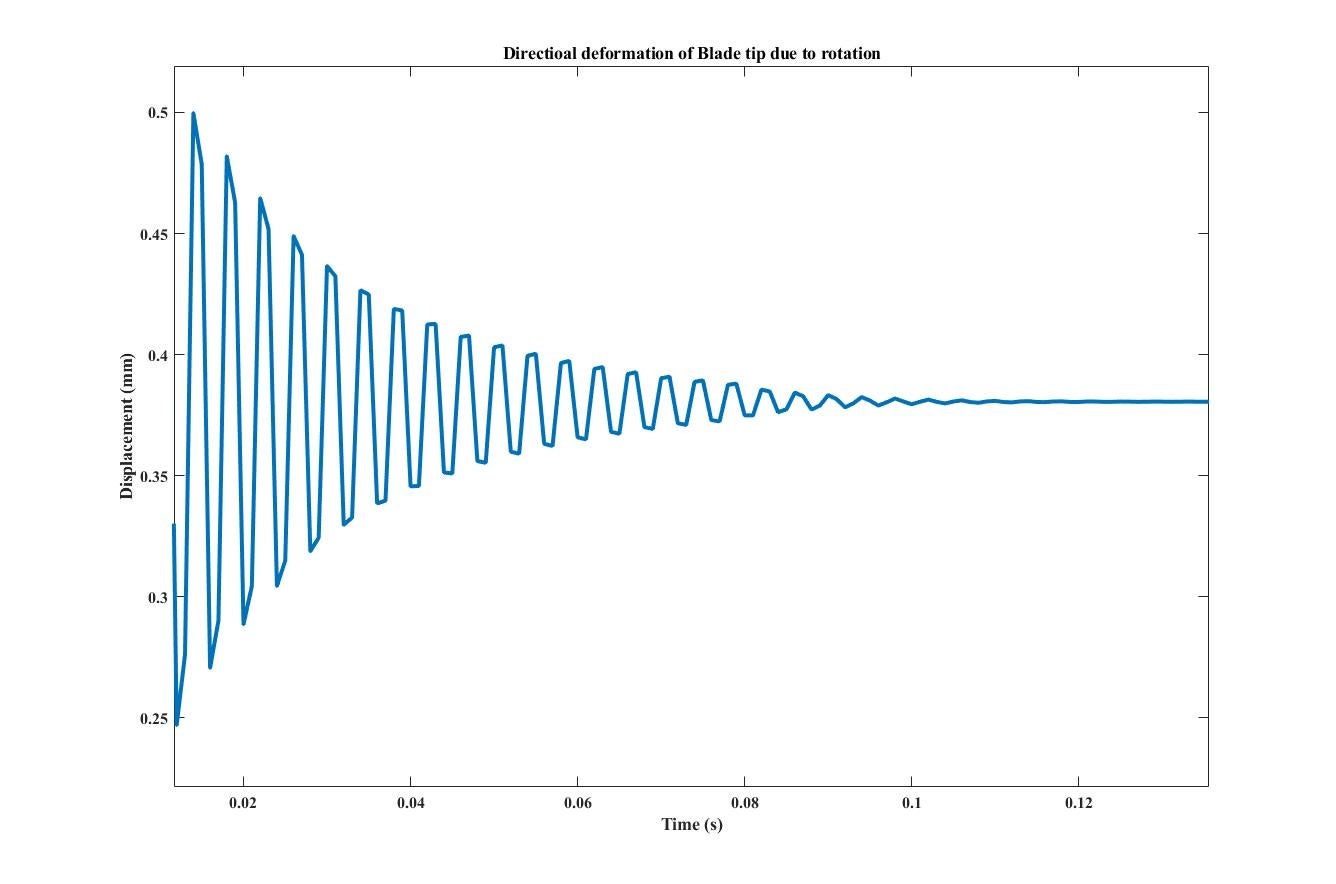-
-
September 13, 2021 at 9:18 am
mohammedlaminemekhalfia
SubscriberDear Ansys users,
I hope that you are all doing well.
I am studying the vibration of a blade in function of rotational velocity. we suppressed the effect of aerodynamics
I used transient structural, assign the fixed support , Assign a rotational velocity
the blade feedback through ANSYS is presented in the picture.
October 4, 2021 at 11:19 pmSheldon Imaoka
Ansys Employee
It is not clear what you are expecting vs. what you have in the simulation results. When you are comparing 'instantaneous' vs. 'continuous sinusoidal', what are you referencing based on the plot you show? If you are talking about the displacement near time=0 of value 0.25, that is because the rotational velocity is suddenly applied (I'm guessing you step-apply it, which is the default behavior), so it goes from rest to the actual rotational velocity immediately. If you wanted to model the gradual ramp-up, then you should apply rotational velocity by ramping from 0 to final value during a reasonable time interval.
Also, by fixing the blade and applying rotational velocity, you're solving in a rotating frame of reference. Not sure how your measurement is set up, but I'm guessing the laser is stationary, so it's based on a stationary frame of reference.
Regards Sheldon
Viewing 1 reply thread- The topic ‘Blade displacement under rotation (ANSYS vs Experimental – Laser Vibrometry)?’ is closed to new replies.
Ansys Innovation SpaceTrending discussionsTop Contributors-
3597
-
1243
-
1092
-
1068
-
953
Top Rated Tags© 2025 Copyright ANSYS, Inc. All rights reserved.
Ansys does not support the usage of unauthorized Ansys software. Please visit www.ansys.com to obtain an official distribution.
-
The Ansys Learning Forum is a public forum. You are prohibited from providing (i) information that is confidential to You, your employer, or any third party, (ii) Personal Data or individually identifiable health information, (iii) any information that is U.S. Government Classified, Controlled Unclassified Information, International Traffic in Arms Regulators (ITAR) or Export Administration Regulators (EAR) controlled or otherwise have been determined by the United States Government or by a foreign government to require protection against unauthorized disclosure for reasons of national security, or (iv) topics or information restricted by the People's Republic of China data protection and privacy laws.












